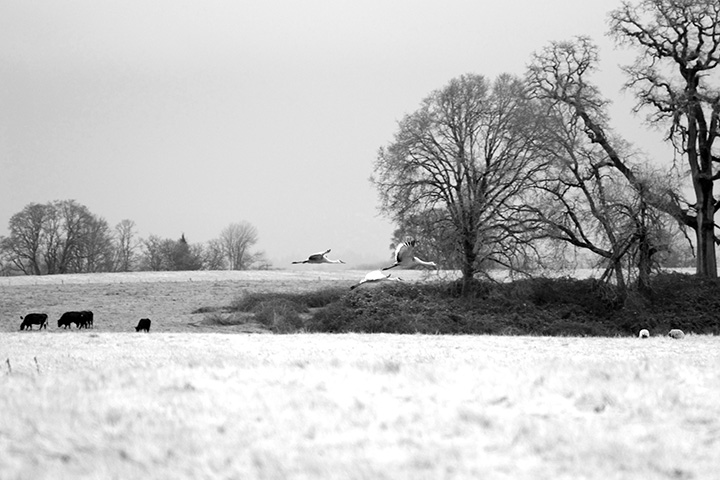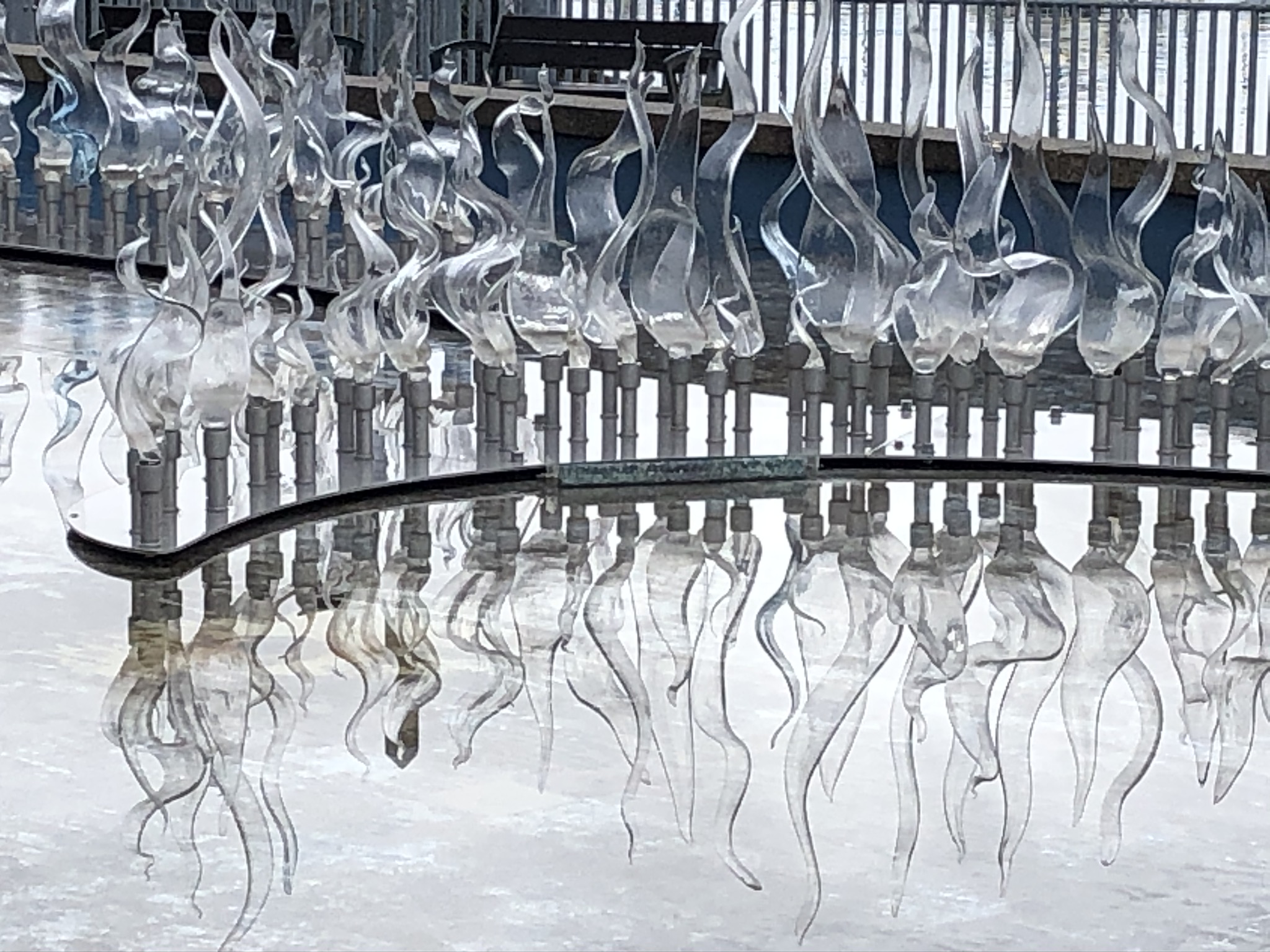There’s always Panama. If we get too overwhelmed by the insanity of the contemporary world we could migrate to some island near Panama joining a troupe of exceedingly happy, permanently stoned sloths. You read that right: the moss there, and the water infused by the moss, has an alkaloid- based chemical composition that is also found in Valium…. much appreciated by an already slow-moving species.

I picked up this comforting tidbit of information from a radio show that taught me a lot about migration, something I’ve been again wondering about last week when I found myself amongst hundreds of visiting white geese, Canada geese and sandhill cranes during my walks. Below is the condensed version of what I learned.

Questions like why does migration happen in general, and where do these birds come from or where do they go, how do they know the travel routes and/or final destinations, have been asked for 1000s of years. We have now answers for some of the questions, and are still surprisingly clueless about others.



Aristoteles – is there any subject he didn’t tackle, ever? – suggested three possibilities to explain the disappearance of birds during the Greek winter months. One was the speculation that they traveled to other places, one was the suggestion that they might hibernate (behavior that people had observed in bats around Athens) and the third was transmutation. Wish that were true – let’s just all transmute into happier forms when we are bored with our worm pecking, grub searching existence…. let’s become sloths!


The migration hypothesis was elevated in the 17th century with the (re)invention of the telescope by Hans Lippershey in the early 1600s. (He applied for a patent (!) thus outsmarting a local competitor who claimed it was his design – but that is a mystery story for another day.) Peering into the sky and seeing all those lunar hills and craters suggested perfectly sensible travel plans of birds: they go to the moon! It took until 1822 to dislodge this human projection of our own dream, when some hunting Count von So and So returned with his kill from the heaths of Northern Germany: a stork. A stork with a spear embedded in his neck, that had not prevented him from traveling North. A weapon that was, according to the consulted German luminaries in the university ethnology departments, of African origins. (You can read more about the “Pfeilstorch” here.)

Across the next years about 25 individual birds were collected that had somehow managed to migrate from one continent to the other with a piece of ebony poking through their necks… Mystery solved – birds migrated South. Scientific insight gained beyond the migration destination: some form of marking allows us to identify the birds and tracking their routes. Banding was born. Nowadays it comes in more sophisticated forms of transmitters and receivers. And it does not just apply to the field of ornithology, but people research the migration patterns of everything, from wildebeests, caribous, whales, to turtles and butterflies, to name a few.

More on the specifics of these patterns tomorrow. They do matter, beyond feeding into the passions of your friendly bird photographer, for our understanding of nature as a system, as it turns out.


And here is a gem sent by a friend.
























































































































